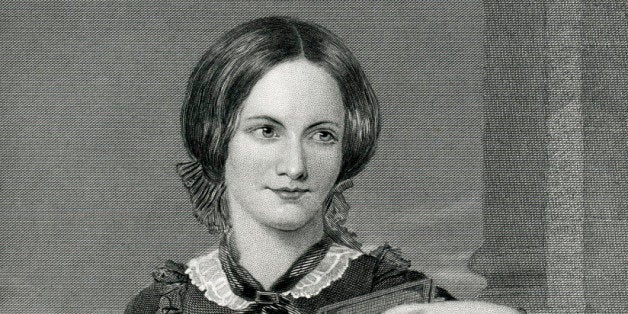
I didn't know I loved Jane Eyre until I began teaching it. You would think that after hours of research and hundreds of student papers, there would be nothing new to say about a novel nearly two centuries old. And yet, time and again I found that the little lessons to help students develop critical reading and writing skills had far-reaching effects. Students read and reread, gathered and annotated passages, and the results were some of the most interesting papers I've ever read (for example, one looking at the many fires in the novel and following a pattern in the imagery to better understand Jane's feelings of isolation). I think this is because Jane Eyre is a true masterpiece, a nuanced and complex novel that takes motif and turns it into metaphor. It creates its own language of images and emotions, and the time spent culling passages is rewarded with meaningful insights into the characters and conflicts.
But I am not naïve. I know there must be people (perhaps even some former students) who never finished the novel. To many readers, Jane Eyre is hundreds of depressing pages about a childhood like Harry Potter's, if he had never found magic. Or it is the tale of a simplistic but unlikely romance between a plain governess and her wealthy, attractive employer. But there is much more in those nearly 200,000 words, and I do not only refer to the mysterious shrieks coming from the third floor of Thornfield Hall.
When I first started teaching Jane Eyre, I found myself marking passages not just for my students, but also for myself. I developed a sort of kinship with the novel that made me look forward to returning to it. Even now, just the idea of perusing those worn pages, skimming the annotations compiled over years of rereadings and class discussions fills me with a sort of thrill. [Minor spoilers ahead] The haunted red room, the "slattern" on the stool, Helen dying as Jane lies next to her, the sensuality of spring's arrival at Lowood, Jane (hidden) spying Blanche Ingram for the first time, a blood-red moon hovering over the tree struck by lightning, Mr. Rochester's bed on fire, Jane's torn wedding veil, the rushed walk to the chapel, violent scenes on the third floor, St. John's strange, forceful proposal, Thornfield destroyed. So many powerful, evocative moments.
"Mr. Brocklehurst is not a god," Helen once tells Jane. Helen, another orphan at the Lowood school and Jane's first friend, attempts to comfort Jane after the head Mr. Brocklehurst humiliates Jane and brands her a liar. Jane wonders why Helen would take pity on her after the shameful scene, and Helen's response remains an important lesson for Jane. Her words are a reminder that Jane must know herself and her own mind, that another person's judgments and harsh words should carry little weight. This strong sense of self becomes imperative for Jane's survival and success.
Jane is repeatedly faced with rejection and loneliness. The novel opens with a cozy family scene around a hearth, a scene from which she is excluded. On a chilly, rainy afternoon the Reed children huddle around their mother and the fire, while Jane sits alone in the shadows. Over and over again Jane is reminded that she is unworthy and unwanted, and even those who love her eventually abandon her - her parents, her uncle, Helen, Miss Temple. She is left with no choice but to strengthen her resolve, to learn to have faith in herself, to learn to be the sort of person she could have faith in.
And so when she has the choice to compromise her principles for love and companionship, she chooses instead to be alone. And this time she does the abandoning, leaving Mr. Rochester and the morally ambiguous life he offers her.
Then there are the many chapters that most readers forget, the section that comes between falling-in-love and happily-ever-after. Heartbroken Jane leaves Mr. Rochester and wanders alone until she is rescued by St. John and his sisters (the 2011 film adaptation directed by Cary Fukunaga beautifully uses this portion of the narrative as a frame for Jane's whole story). As she makes her new life at Moor House, Jane realizes that she is willing to compromise neither emotions nor principles. It is only in maintaining faith in herself, and the passions and morals that drive her, that she is able to find contentment.
Though the plot is filled with notable dynamic twists, it is still a contemplative novel, defined by a series of reflections on emotions, spirituality, and identity in the face of hardship, prejudice, and rejection. And in that the novel remains decidedly modern and relevant. Jane's story is the struggle and triumph of the individual.
This sentiment is best expressed by Jane herself: "Do you think I am an automaton?-- a machine without feelings? and can bear to have my morsel of bread snatched from my lips, and my drop of living water dashed from my cup? Do you think, because I am poor, obscure, plain, and little, I am soulless and heartless? You think wrong! -- I have as much soul as you -- and full as much heart! And if God had gifted me with some beauty and much wealth, I should have made it as hard for you to leave me, as it is now for me to leave you. I am not talking to you now through the medium of custom, conventionalities, nor even of mortal flesh: it is my spirit that addresses your spirit; just as if both had passed through the grave, and we stood at God's feet, equal -- as we are!"
To the author of my favorite book, Happy birthday!
And to you, Reader, I hope you will join me in celebrating. Brush off that copy gathering dust (or try a free digital copy!) and enjoy at least a little bit of one of the greatest novels of all time.
